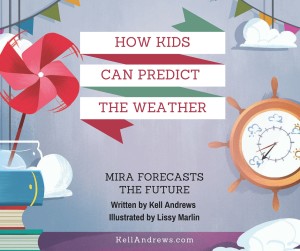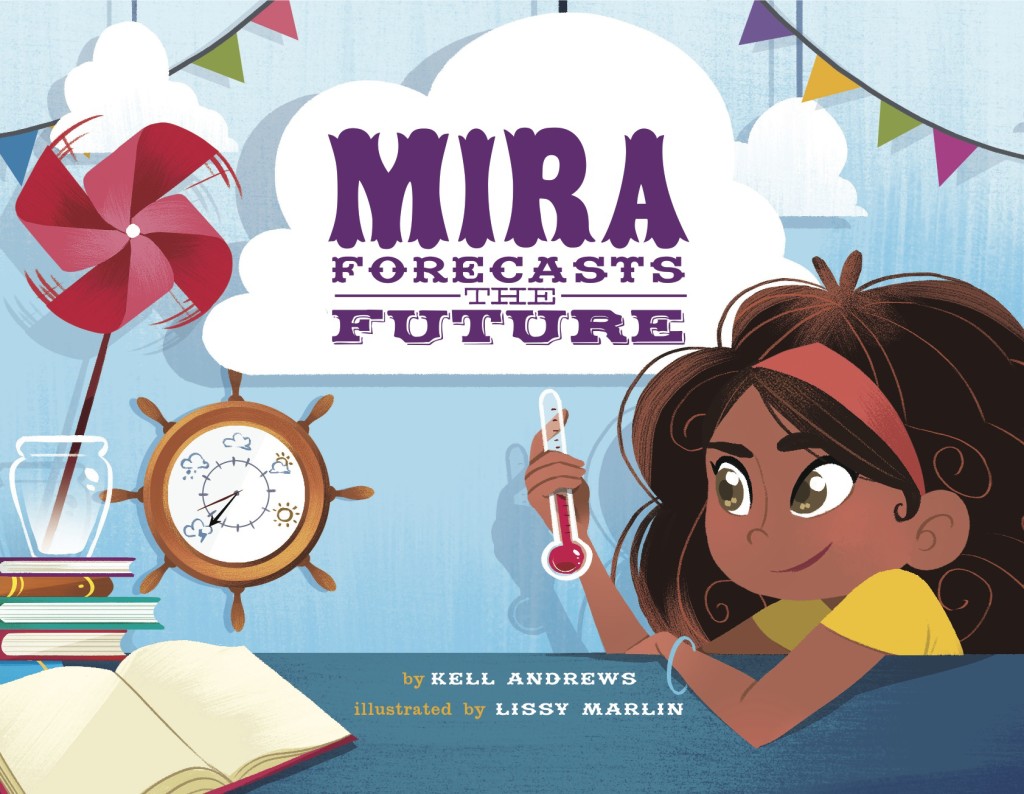Kids can predict the weather! Mira from Mira Forecasts the Future tells you in her own words how she makes weather predictions.
Then download a free printable activity kit — games, mazes, weather tips, coloring page, plus instructions and cutoffs to make your own pinwheel like Mira!
Someday I’ll be a professional meteorologist. That’s a scientist who studies weather and makes weather predictions. I’ll work in a high-tech weather station and use cool tools like radar, satellite photos, and computer models. Maybe I’ll even report the weather on TV!
Meteorologists also use a lot of the same tools I have in the weather station I made with my mom. My most important tools are my own eyes. I use them to observe the sky and my tools. (Observe means watch scientifically!) I make my own weather predictions, and you can too!
Mira’s Weather Station
Mira, Mira on the wall Free predictions for one and al
Here’s how I use my weather statil!on. You can make one too, but all you need is thermometer and your eyes to start tracking the weather.
Temperature – My thermometer measures temperature – how cold or hot it is. I keep it inside my weather station so the sun doesn’t heat it up.
Air pressure – It doesn’t feel like air has weight, but it does! My barometer measures how much the air is pressing on the earth. When air pressure is high, skies are usually sunny. When air pressure is low, skies are usually cloudy.
Wind direction – I check the streamers on my windsock to see which way the wind is blowing. You can also use a wind vane.
Wind speed – I can’t see the wind, but I can tell the wind is blowing harder when my pinwheel spins faster. I put it on its side so it’s more like a real anemometer, the tool meteorologists use to measure wind speed.
Rain – I marked the sides of a straight jar with a ruler to make a rain gauge. It collects the rain (precipitation) so that I can measure rainfall.
Clouds – I love observing the clouds. There are two main kinds: puffy clouds (cumulus) and flat, layered ones (stratus). Clouds are made of tiny water drops. When they are gray, they are full of water and more likely to rain.
Apps – My mom lets me check her phone app to check what kind of day the experts predict. I can even look at radar and satellite photos.
Weather Journal – I write down my observations and measurements from my weather tools a few times every day. That’s how I see patterns in the weather. Good observations make good predictions! Good records too.
No one can tell the future (except my mom Madame Mirabella), but when I use the right tools, I can predict the weather. I’m not always right, but usually.
Mira’s journal entry
| Temperature | Barometric Pressure | Type of Clouds | Amount of Rain | Wind
|
|
| June 29 | 88 degrees F | 30.00 inch | None | None | East, windy |
| June 30 | 83 degrees | 29.88 inch | Cumulus | None | Northeast, breezy |


